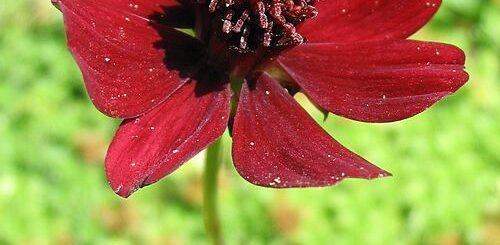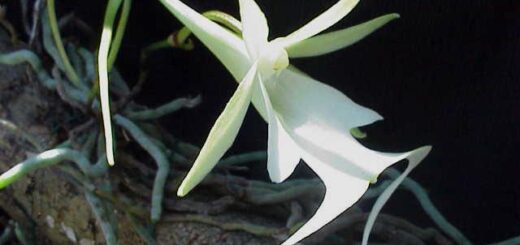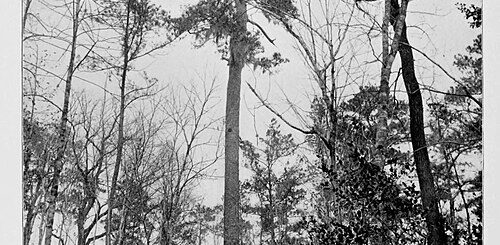Longleaf Pine – The Comeback of a Southern Giant
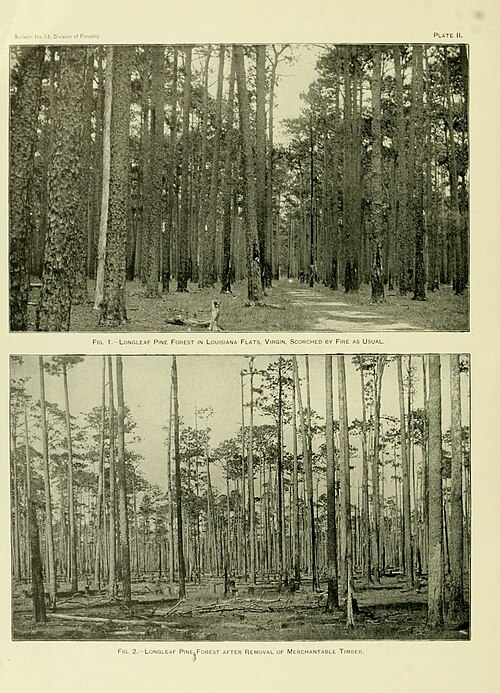
Walk through the southeastern forests of the United States, and you might catch sight of a tree that once ruled the landscape, the Longleaf Pine, it is also known as “Yellow pine” or “Long leaf yellow pine” (Pinus palustris). Towering and regal with its tall, straight trunk and feathery needles, this tree isn’t just a pretty face. It’s a symbol of resilience, a keystone of biodiversity, and the subject of one of the greatest ecological comeback stories in the U.S.
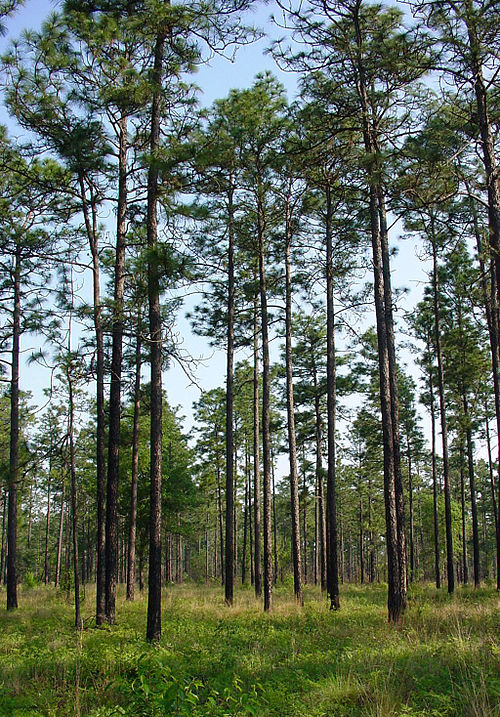
Longleaf pine forest – Creative Commons | Author: Chuck Bargeron, University of Georgia – Source: https://commons.wikimedia.org/wiki/File:Pinus_palustris_UGA1.jpg
🌱 A Tree With Deep Roots (Literally and Historically)
The Longleaf Pine once covered over 90 million acres from Virginia to Texas. Indigenous peoples valued it, early settlers relied on it, and it became the backbone of the American naval stores industry thanks to its resin, ideal for making tar and turpentine.
But like many giants, it was nearly brought down — by logging, fire suppression, agriculture, and urban development. By the 20th century, less than 3% of the original longleaf forests remained.
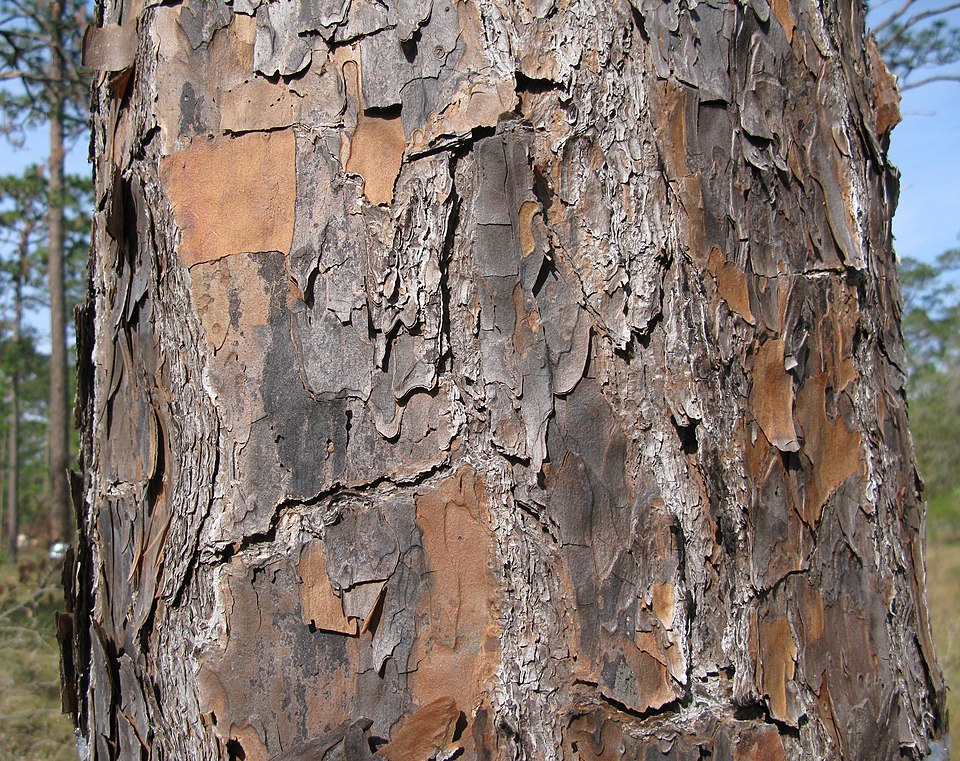
Close up of longleaf pine bark – Creative Commons | Author: FUchesco – Source: https://commons.wikimedia.org/wiki/File:Longleaf_pine_bark.jpg
🔥 Fire: The Pine’s Old Friend
What makes the Longleaf Pine unique is its unusual relationship with fire. Unlike many other trees, it thrives in fire-prone environments. In fact, it needs fire to survive and outcompete other species.
Young longleafs go through a “grass stage,” where they resemble a tuft of green grass and can stay that way for years. During this time, they build a deep taproot and store energy, all while being extremely resistant to fire. When the time is right, they shoot upward rapidly — a survival strategy that gives them a leg up (literally) over other species after a burn.
Without regular burns, hardwoods and competing pines creep in, eventually shading out young longleafs and disrupting the delicate ecosystem balance.
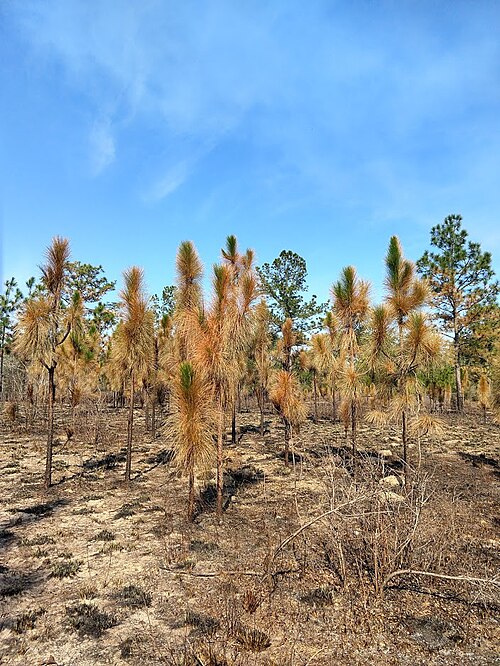
Longleaf pine saplings post-burn – Creative Commons | Author: FUchesco – Source: https://commons.wikimedia.org/wiki/File:Post-burn_longleaf_pine_saplings.jpg
🐢 A Biodiversity Hotspot
Restoring longleaf isn’t just about saving a tree. These forests are home to a rich tapestry of life, some of which are endangered or threatened:
🐢 Gopher tortoise – a keystone species whose burrows shelter over 300 other animals.
🐦 Red-cockaded woodpecker – dependent on mature longleaf for nesting.
🌿 Wiregrass and pitcher plants – part of the diverse ground cover in a healthy longleaf ecosystem.
In fact, longleaf pine ecosystems are among the most biologically diverse outside of the tropics.
🌍 The Restoration Movement
Today, thanks to efforts by landowners, conservationists, and government initiatives like America’s Longleaf Restoration Initiative, millions of acres are being replanted and managed with prescribed burns.
It’s a long game — these trees grow slowly and take decades to mature — but the rewards are huge: carbon storage, storm resilience, wildlife habitat, and a cultural reconnection to the Southern landscape.
🌿 How You Can Help
Even if you don’t live in longleaf country, there are ways to support its comeback:
- Support organizations working on longleaf restoration.
- Educate others about fire ecology and native habitats.
- Choose sustainably sourced wood and products.
- Volunteer with prescribed burn programs or local nature reserves.
🌲 Longleaf, Long Legacy
The Longleaf Pine may have fallen from its former glory, but it’s far from forgotten. Its deep roots — both in the soil and in Southern history — make its recovery a symbol of resilience and regeneration. With a little fire and a lot of care, this majestic tree is reclaiming its rightful place in the forest.
References:
https://en.wikipedia.org/wiki/Longleaf_pine

